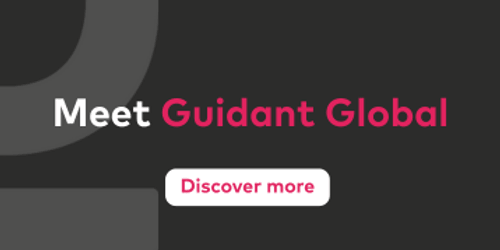

Author
4 minutes
How to write a great request for proposal (RFP)
A Q&A with Head of Sales Operations, Mike Quinn
In the world of MSP, RPO and SoW, issuing a request for proposal (RFP) is the way most businesses invite workforce solution providers to bid to offer their products.
At Guidant Global, we receive hundreds of RFPs from both the public and private sector looking to optimise the way they manage their contingent, permanent and contracted talent. The quality of RFPs varies wildly. While some are clear in their direction, with deep detail backed by data, there are also some that look to be templated: with stock phrases and a lack of actionable information.
The reason for this? Writing an RFP is not a simple process. The amount of effort that needs to be exerted to make a great RFP can be daunting, especially when you’re under time pressure.
But to achieve an excellent solution, you need to write a great RFP. With the right information, a workforce solution provider can present you with a solution that is truly aligned with your hiring needs, company culture and long-term strategic vision. Done badly, you’ll get bids that are generic.
So how do you go about writing a great request for proposal, and what are the things you should avoid? To find out, we spoke to Guidant Global’s Head of Sales Operations, Mike Quinn.
Q: What makes for an excellent RFP?
In our experience, a great RFP is the direct result of time and research; firstly to really
get to the root of your challenge(s); secondly to identify clear objectives and goals (that once met will solve said challenge); and thirdly to source and supply the required level of insight and workforce data for accurate modelling purposes.
Combined, the results of these efforts provide the bidder with the understanding, insight and direction to not only design a differentiated service solution and complete response but ultimately provide a successful, well implemented and cost accurate solution – which is the whole reason for the RFP after all.
So the time and effort it takes to supply a high-quality RFP is paid back as you’ll be better able to evaluate responses on an “apples-to-apples” basis and prevents (or at least makes it clear when it happens) bidders from simply copy-and-pasting from a stock answer library.
Put simply, provide a stock RFP and you will get stock answers.
It should also be noted the risk to the business, that inaccurate data and unfocused goals bring which result from a lack of due diligence and research. This can have a huge impact on the amount of due diligence that needs to take place in the implementation phase, ultimately losing time and delaying go-live timelines.
Poor workforce data and objectives = poorly modelled solution = inaccurate design, forecasts and costs – all of which will have to be rectified at implementation. You want bidders to recognise the effort you have put into the RFP. Just as a buyer can instantly spot boilerplate text, bidders can do the same with a generic RFP.
A detailed, well-constructed RFP will challenge the best bidders to really think about what’s best for you. You want to enable bidders to provide bespoke, creative, accurate and cost-effective solutions by focusing on the ends (resolving your challenges), not the means (generic activity). In short, the clarity, completeness and quality of the RFP and supplied data has a direct impact on the success of the entire outsourced recruitment programme.
From a supplier perspective, often the very best RFPs we have been part of offer up open
communication from the outset. Those clients that seek out information, share knowledge,
allow open communication beyond the scheduled communication periods and clearly want to hear from providers, have great results.
We can even go so far as to recommend holding all-supplier calls. One memorable client even went one step further and hosted an onsite event to introduce their team to all suppliers, field questions and facilitate open discussion. All parties involved gained valuable knowledge, time and experience from each – which ultimately led to a great RFP and a successful solution for the client.
Q: What preparation should be done before issuing an RFP?
The most important aspect before issuing an RFP is to ensure that you’re making preparations well in advance. From our experience, the most time-consuming (and arguably most important) preparatory activity is getting buy-in from everyone who will become a part of the process, including the person who will have final sign-off. This ideally needs to happen well before you issue the RFP to market.
In some situations, a supplier presents a solution that the primary stakeholder is pleased with, only for rollout to be paused higher up the chain, merely because the final signatory has not been made aware of the process.
I would also recommend speaking to suppliers, too. By scoping out the potential offerings before issuing an RFP, you can narrow down potential partners. You are also able to form relationships, learn about the company culture, and often, a workforce solution provider can help you define some elements in the RFP – even though you could choose a different business’ solution over the one we would present.
Q: In your view, what is the most important section of an RFP?
Though all sections have their value, the one that should immediately resonate is the first thing a bids team sees: the briefing.
If it is clear what solution your organisation is looking for in the briefing section, we can immediately understand what’s important, what form the workforce solution will take – while also understanding what the culture of the business is in.
If it’s too generic, however, it pressures a supplier to make educated guesses – which inevitably are not always accurate. Sometimes clients might think that keeping the briefing vague will inspire a greater spread of creative solutions. But this ignores the fact that by even considering going to market there’s clearly an objective to achieve or problem to be solved. Empower bidders to actually hit the mark and don’t be afraid to reveal, for example, that the board is specifically targeting ‘x’ cost savings next financial year, or that NPS results show candidate experience really needs renewed focus.
The better the briefing, the better chance of being presented with higher quality solutions. It’s as simple as that.
Q: What’s the number one thing that RFP issuers should avoid?
Using templates, or recycled RFPs. Every workforce solution needs to be unique if it’s going to be a success. As I said earlier, sticking to stock answers inevitably leads to stock responses, which isn’t ideal for either the business issuing the RFP, or a workforce solution provider. I can’t speak for every business within our industry, but at Guidant Global, we want to offer the best solution, and to do that, we want to be as closely aligned to a business’ requirements as possible.
I’d also encourage businesses issuing an RFP to, keep the dialogue with bidders as open as possible throughout the process. In the public sector, of course, this is impossible. But for private sector businesses, the opportunity is there to build powerful relationships. With active collaboration, we can ensure that a project is successful throughout its lifespan – whether the solution is an RPO, MSP or SoW.
For more information on RFPs, download our guide to ‘Creating an RFP for outsourced workforce solutions’.
Insights to drive workforce performance
Workforce insights in your inbox
Sign up for our newsletter with the latest workforce management news, insights, analysis and more.
Australia
Suite 1403, Level 14
309 Kent Street
Sydney
NSW 2000
United Kingdom
United States
27777 Franklin Road
Suite 600
Southfield
Michigan 48034








